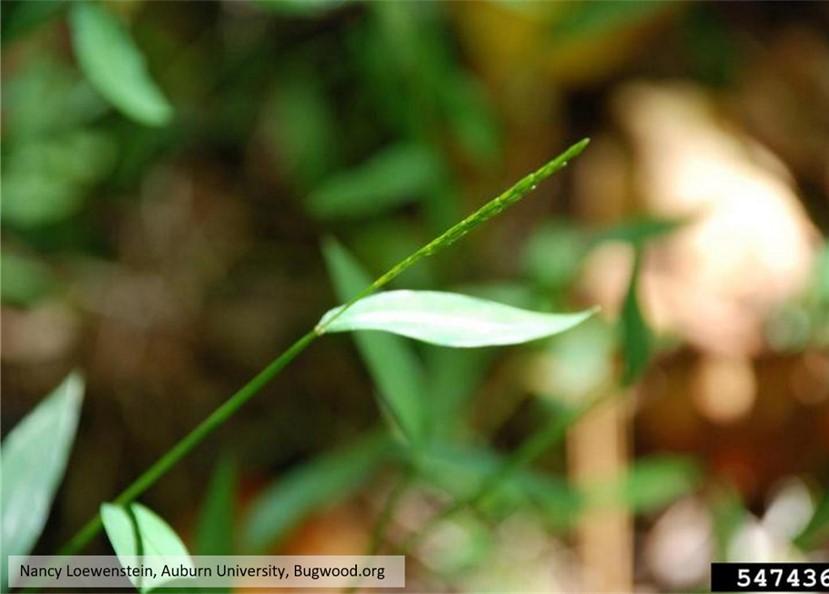Japanese Stiltgrass Identification and Management

Now is the time to scout pasture and hay fields for Japanese stiltgrass and take note of its locations. This invasive grass is typically seen in wooded areas, but unfortunately has been creeping into fields. Once the seed heads start to form in another month or two, you’ll want to have the mower ready.
The leaves of Japanese stiltgrass are wider and shorter than most of our common pasture grasses. There is also a distinctive silvery midvein that is slightly off-center from the middle of the leaf (Figure 1). Japanese stiltgrass also has a shallow root system, so it can be pulled out easily. For more information on how to identify stiltgrass, visit USDA’s National Invasive Species Information Center website.
The one (and only one) positive thing about this invasive is that it is an annual, so there’s no perennial root system to contend with. However, as an annual, stiltgrass spreads by seeds. Seed heads start to form in mid-September through October. Once they are visible (Figure 2), mow the area to prevent the seeds from maturing and becoming viable. The stiltgrass will likely not have enough time to regrow and set more seeds before the first frost.
Herbicides are another option. A broad spectrum herbicide such as glyphosate can be used as a spot-spray. If using glyphosate, the optimum application timing is late spring through summer (before seed heads are formed). Follow the label for rates and restrictions. (With Roundup®, for example, do not apply to more than one-tenth of any acre, and wait 7 days after application before grazing or making hay.)
Prowl H2O® is a pre-emergent herbicide that contains the active ingredient pendimethalin. It is labeled for applications on established grass that has at least 6 tillers; however, its reseeding restrictions make it a challenge to use in grass crops. The reseeding restrictions, or the waiting period before reseeding, are 10 months for pasture grasses and 6 months for alfalfa. (Remember, Prowl H2O is a pre-emergent herbicide, so it will prevent grass and alfalfa seeds from germinating, too.) As a pre-emergent, it must be applied before the stiltgrass emerges, which can happen beginning when the soil temperature is about 50 degrees F; this means that Prowl H2O will need to be applied earlier than when we may be used to with other summer annual weeds. If Prowl H2O is used, manage the bare areas so that weeds cannot take over before reseeding can be done.
Once a control method is implemented, reseed bare areas so they are not left for stiltgrass and other weeds to fill back in. In order to keep your forage grasses competitive, use practices such as proper mowing height, proper grazing and stocking rates, and apply nutrients and lime at the proper rate when needed.
This article appears in August 2022, Volume 13, Issue 5 of the Agronomy news.
